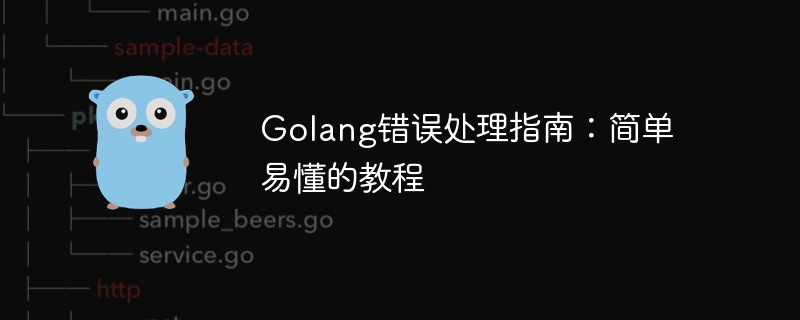

In software development, error handling is a crucial task. Good error handling can help developers detect problems early, improve code robustness, and provide users with a better experience. This article will focus on the error handling mechanism in Go language (Golang), and give simple and easy-to-understand tutorials and specific code examples.
In software development, errors are inevitable. Errors may be caused by changes in the external environment, uncontrollable factors, or internal logic errors in the program. A good error handling mechanism can help us handle exceptions gracefully when a program error occurs and ensure that the program runs stably.
In the Go language, error handling is implemented by returning the error type. During function execution, if an error condition is encountered, a non-nil error object will be returned. Developers can perform corresponding error handling logic based on the value of the error object.
Below we use a simple example to demonstrate how to handle errors in the Go language:
package main
import (
"fmt"
"errors"
)
func divide(a, b int) (int, error) {
if b == 0 {
return 0, errors.New("除数不能为0")
}
return a / b, nil
}
func main() {
result, err := divide(10, 0)
if err != nil {
fmt.Println("出现错误:", err)
} else {
fmt.Println("计算结果:", result)
}
}In this example, we define a The divide function is used to perform division operations. When the divisor is 0, we return a custom error object. In the main function, we call the divide function and check whether an error occurs, and output the corresponding results according to the specific situation.
Good error handling is an important part of ensuring software quality. Through the introduction of this article, I believe that readers have a deeper understanding of the error handling mechanism in the Go language. In actual development, we must always pay attention to the importance of error handling and handle errors reasonably to improve the reliability and stability of the code. Hope this article can be helpful to readers.
The above is the detailed content of A concise guide to error handling in Golang: easy-to-follow instructions. For more information, please follow other related articles on the PHP Chinese website!
 Usage of Type keyword in Go
Usage of Type keyword in Go
 How to implement linked list in go
How to implement linked list in go
 What are the Go language programming software?
What are the Go language programming software?
 How to learn go language from 0 basics
How to learn go language from 0 basics
 How to solve 0xc000409 error
How to solve 0xc000409 error
 How to solve the WerFault.exe application error
How to solve the WerFault.exe application error
 How to define variables in golang
How to define variables in golang
 What are the methods to implement operator overloading in Go language?
What are the methods to implement operator overloading in Go language?